Introducing speculative design into schools for positive change amid the environmental crisis.
Responsibilities: Conceptualization, project leadership, prototyping, production, workshop facilitation, research & strategy, documentation, pilot program, product design, user research
Sector: Education
Role: Design strategist
Client: Red Planea
Duration: 1 year
Education for the Future promotes environmental education and leads transformative initiatives in schools across Spain.
BACKGROUND
“Education for the Future” was developed for Red Planea, a network of schools implementing art programs across Spain.
The project aimed to promote environmental education within these schools, catering to a diverse student population ranging from primary to secondary education, mostly aged between 6 and 18 years old.
Promotional video for “Education for the Future”
APPROACH
The project’s focus on a diverse student body guided our approach. After conducting exploratory research, we targeted teachers, recognizing them as the common thread across these schools and possessing the deepest understanding of their students and contexts.
Then, our goal shifted to providing teachers with resources that would encourage reflection, debate, imaginative thinking, and active participation among both educators and students.
We envisaged these resources as tools to inspire a reevaluation of the schools, exploring their potential to drive positive change in response to the environmental crisis.
PROCESS
1.
Research & Findings
2.
Ideation
3.
Prototyping & Testing
4.
Validation: Pilot Program
5.
Documentation
1. Research & Findings
Following interviews with five teachers, we identified the primary pain points and challenges in teaching environmental education. Then, we introduced a persona named Neus, representing a teacher from the Comunitat Valenciana.
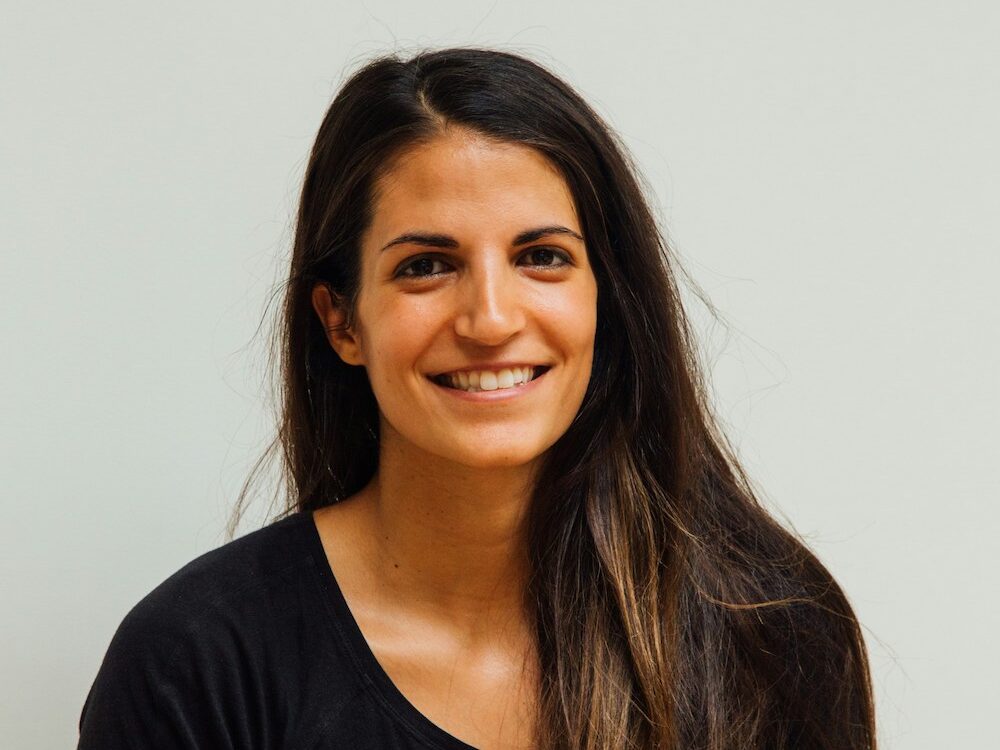
Name: Neus Fernández
Age: 42
Education: Master’s Degree in Education + Civil Service Exams
Hometown: Valencia, Spain
Family: Single, in a relationship
Occupation: Secondary Education Teacher
Goals: Neus aspires to excel as a teacher while maintaining a balanced and fulfilling life.
Frustrations: Juggling various responsibilities such as teaching, grading, guidance, and attending school meetings leaves Neus feeling time-strapped. Balancing professional duties with a desire for personal time is an ongoing challenge.
Brief story: Neus, a dedicated secondary education teacher, confronts the common struggle of educators in allocating time for environmental education within the curriculum. The prevailing sense of hopelessness concerning environmental issues affects Neus, impacting her motivation to effectively teach these subjects. This emotional challenge is also shared by students as they navigate through environmental education.
Pain Points
1. Lack of Time in the Current Curriculum
Teachers expressed a challenge in allocating sufficient time to explore environmental education topics within the constraints of the existing curriculum.
2. Sense of Hopelessness
Teachers conveyed a prevailing feeling of hopelessness associated with environmental subjects. This sentiment appears to be reinforced by negative news narratives and communication from NGOs through various media channels. This sense of hopelessness is experienced not only by teachers but also impacts students as they engage with these subjects.
“Students find it very hard to think of the future.”

User journey for the introduced persona
2. Ideation
The findings from the research phase prompted the development of a comprehensive set of teaching materials tailored for diverse contexts—an environmental education kit or package. The primary aim of this package was to encourage a problem-solving approach toward addressing the environmental crisis and to embed design thinking within classroom activities.
Moreover, recognizing the time constraints faced by educators, the kit is designed to be versatile and easily integrated into limited timeframes, such as short intervals between classes. Its adaptability allows for seamless incorporation into various subjects, including biology, science, ethics, and others, making it an effective resource for both in-class sessions and as part of homework assignments. This flexibility ensures that educators can maximize its use within the constraints of different academic schedules and subjects, promoting a holistic approach to environmental education across various disciplines.
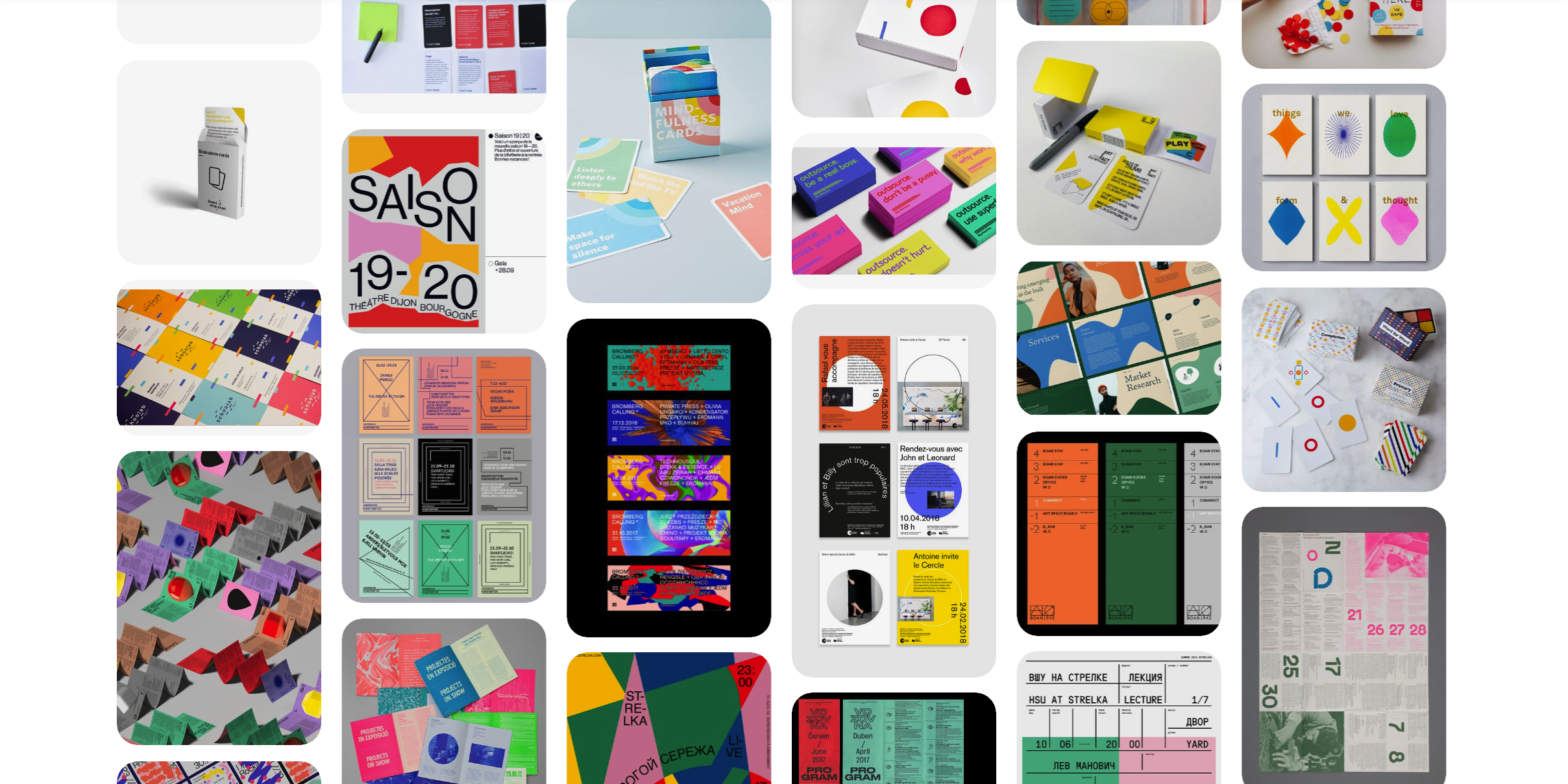
Fragment of moodboard that inspired the development of the kit
3. Prototyping & Testing
We engaged in several rounds of low-tech prototyping, iterations, and user testing, involving diverse groups of teachers and students from various schools.
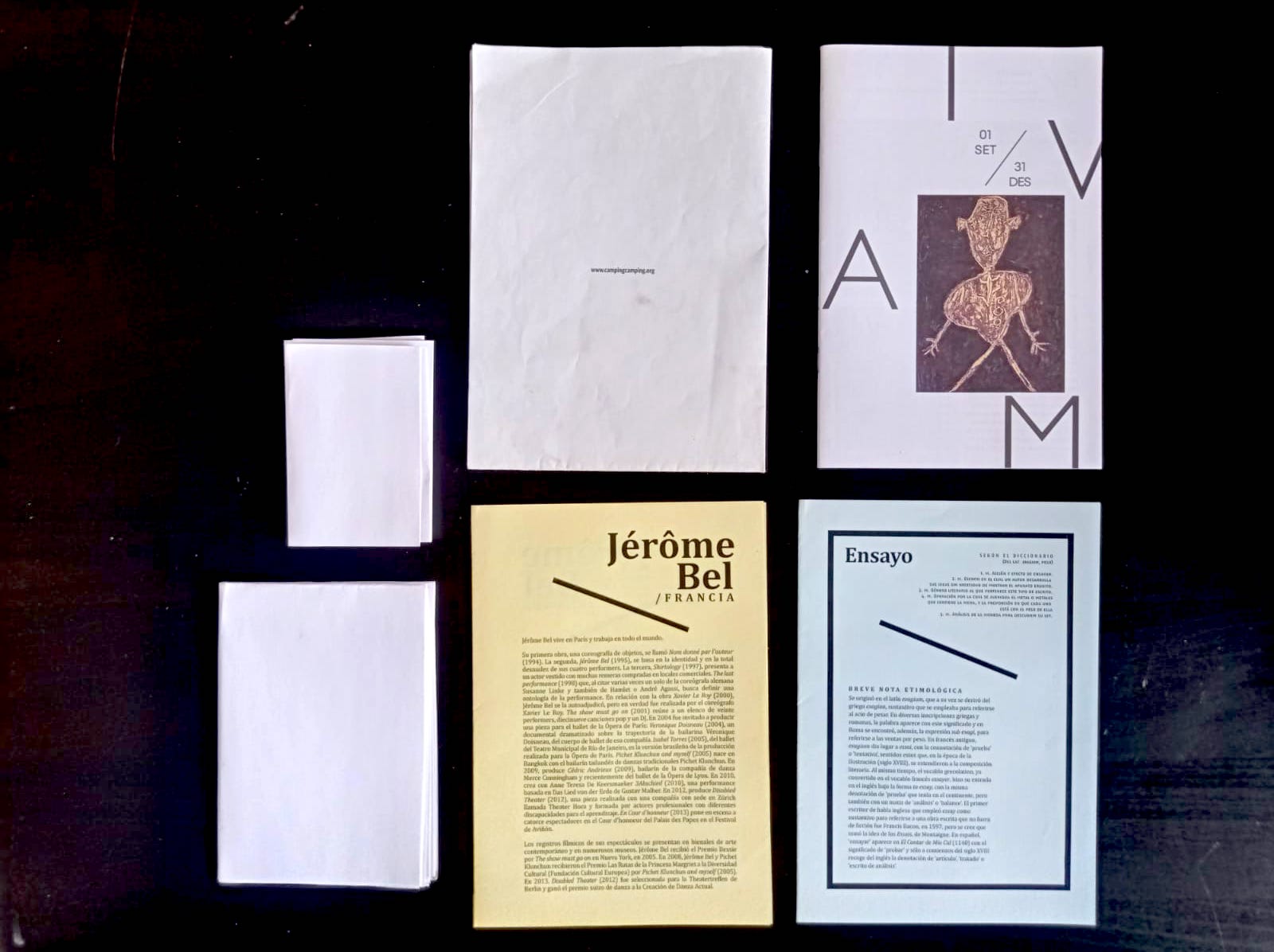
First prototypes of the kit
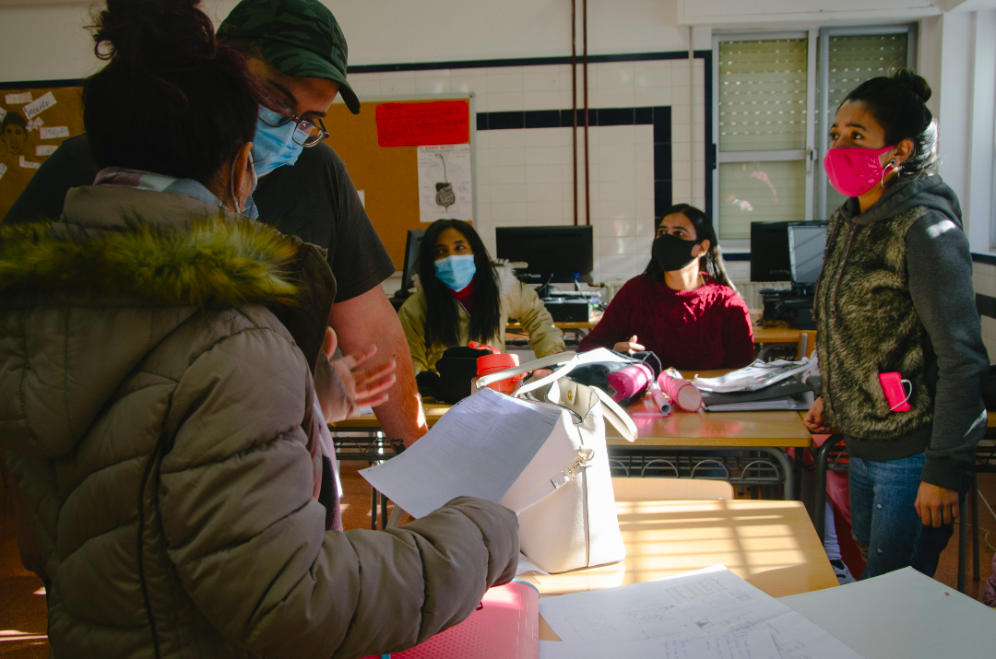
User testing with students
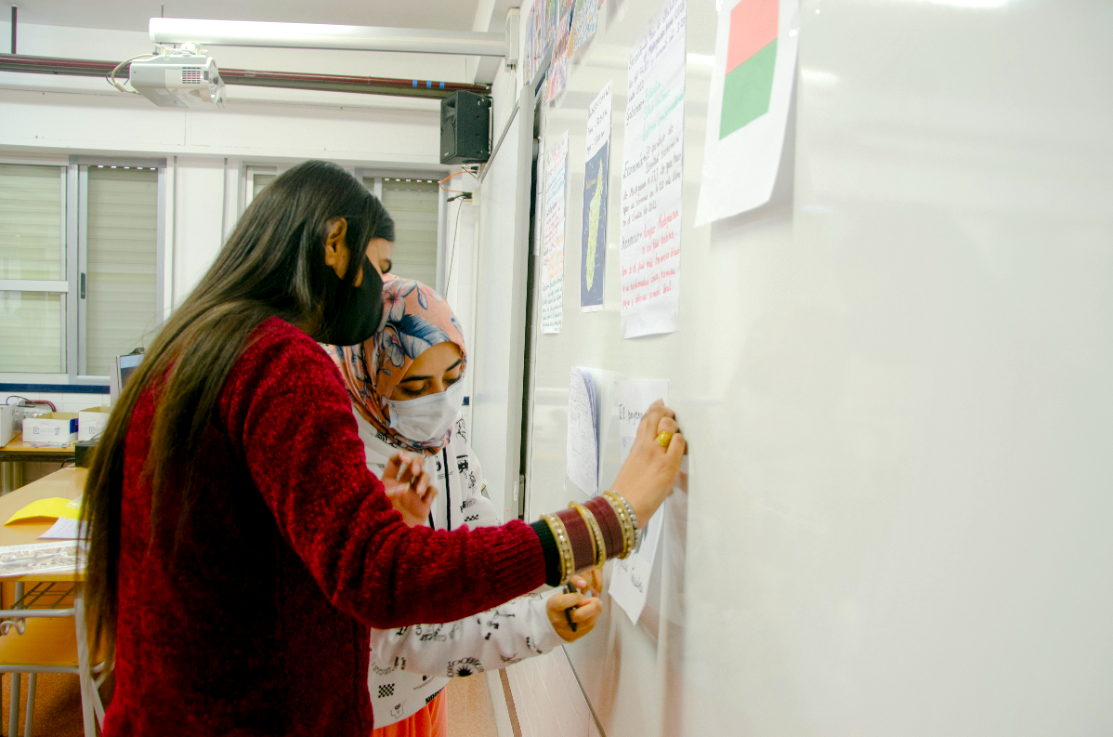
Students testing the first prototypes of the kit
Following extensive refinement, we culminated in the creation of the “Education for the Future Kit,” comprising eight types of easily reproducible materials designed to introduce speculative experiences across different educational settings and ages. These materials include:
- Teacher’s Guide: Education for the Future
- Card Game: Are We Human?
- Card Game: Things from the Future
- Guide: Future Memories
- Models: Case Study
- Form: Imagining Schools
- Forms: A Future for My School
- Model: Agreement for the Future
The activities proposed within the kit cover diverse styles, including meditative, imaginative exercises, and analytical problem-solving tasks.
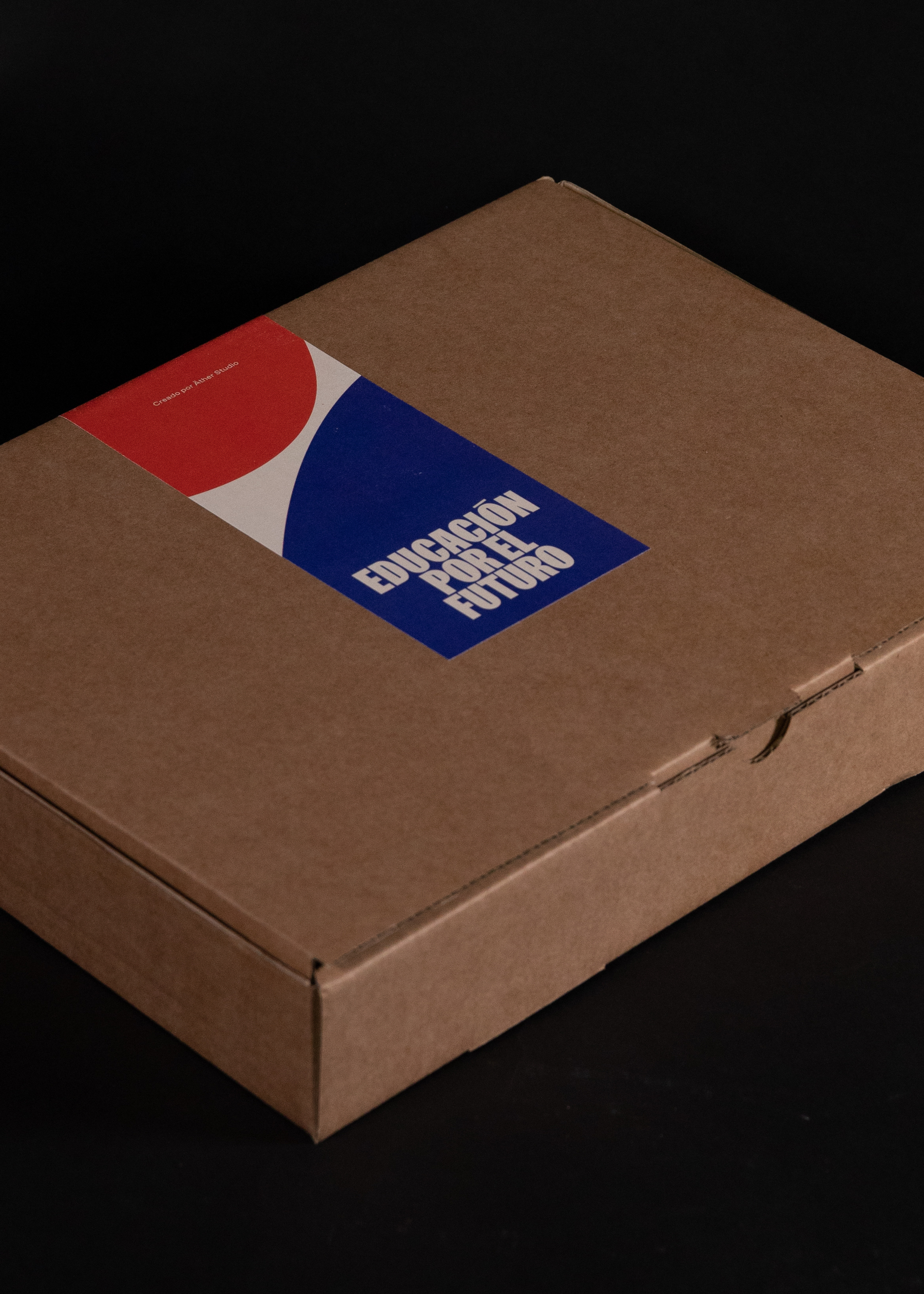
Detail of the “Education for the Future” kit box
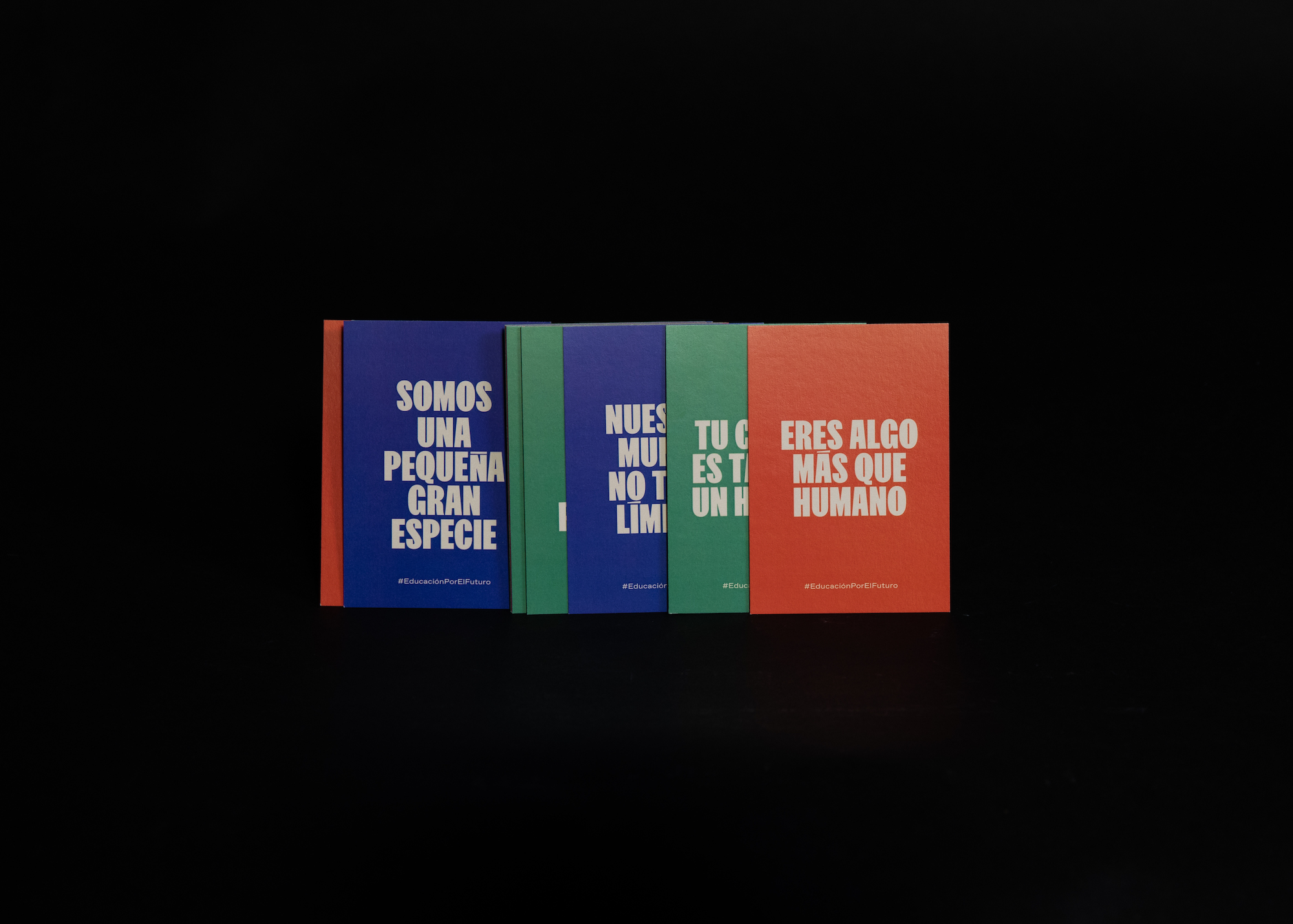
Card game “Are We Human?”

Detail of the “Are We Human?” card game
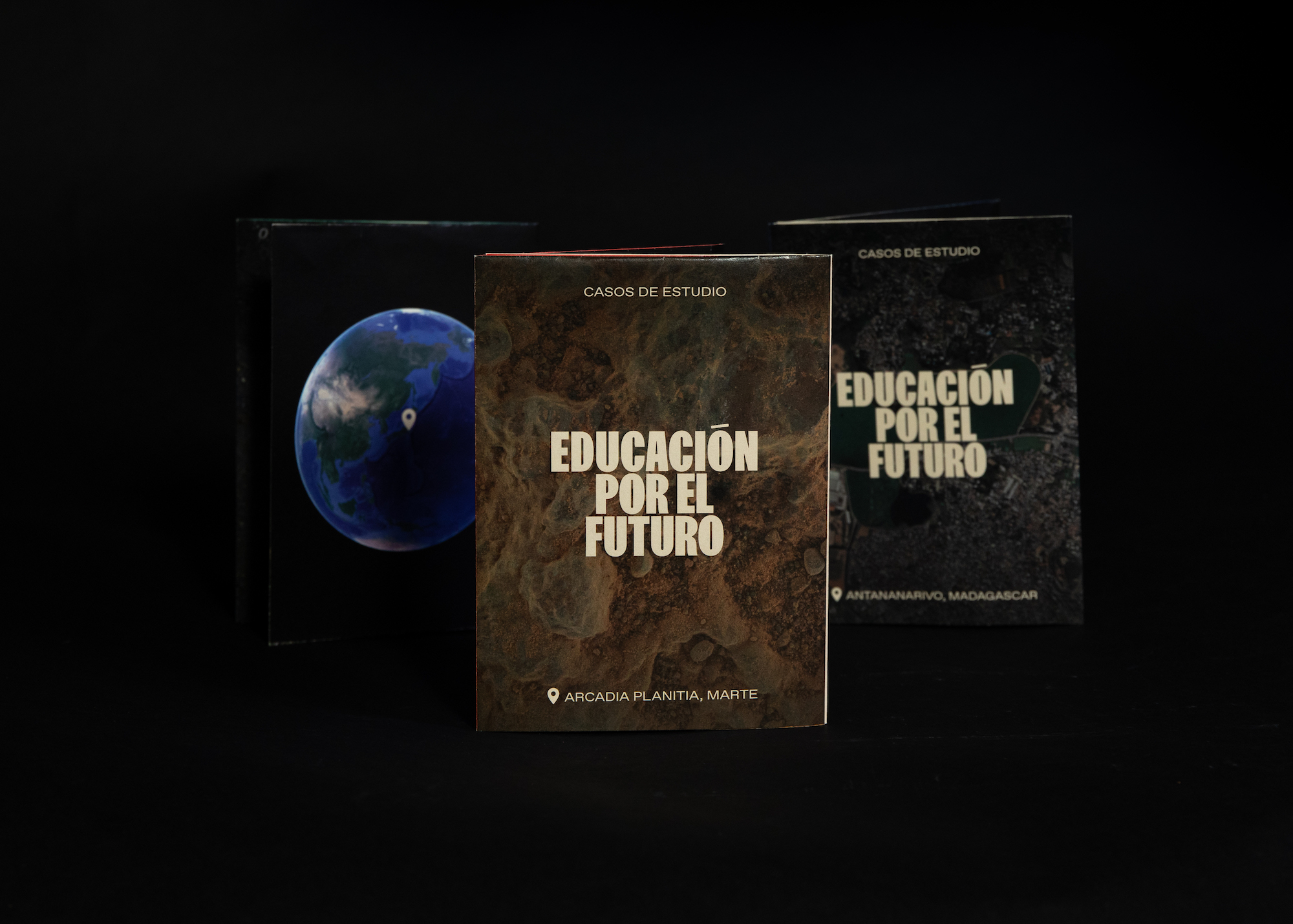
Models of “Case Studies” included in the kit
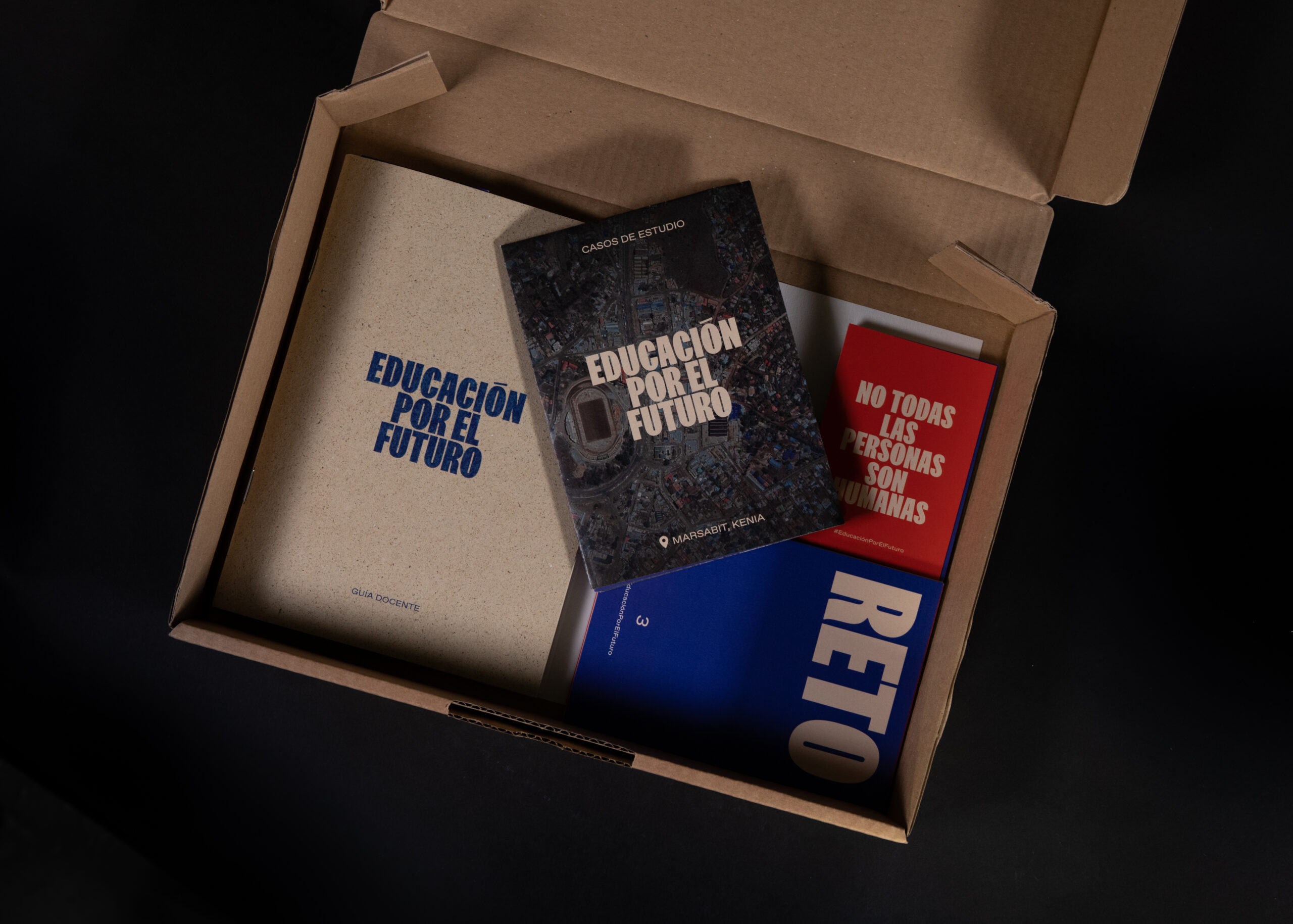
Inside of the kit

Detail of the “Things from the Future” card game
It’s crucial to note that the kit doesn’t provide strict instructions but rather offers suggestions for usage. Its design prioritizes adaptability, enabling educators to tailor its application according to their unique educational contexts, specific requirements, and capabilities.
Moreover, these materials are designed to be enhanced by utilizing the resources available in each educational setting, such as interviews, websites, books, videos, maps, among others. The kit’s potential significantly relies on its adaptability to the unique context it’s employed in, positioning it more as a catalyst for speculative processes rather than a final product.
Then, we oversaw the production process, by selecting eco-friendly materials and methods. We also managed the distribution of the kits, conducted training sessions, and held follow-up meetings with teachers to ensure the successful implementation of the kit in their classrooms.

Organizing materials for distribution in schools

Screenshot of follow-up meeting with teachers
4. Validation: Pilot Program
To validate our design, we initiated a pilot program. Over a six-month period, 50 schools affiliated with the Planea network actively employed the kit. During this phase, students engaged in diverse design thinking exercises, exploring ways to address the environmental emergency.
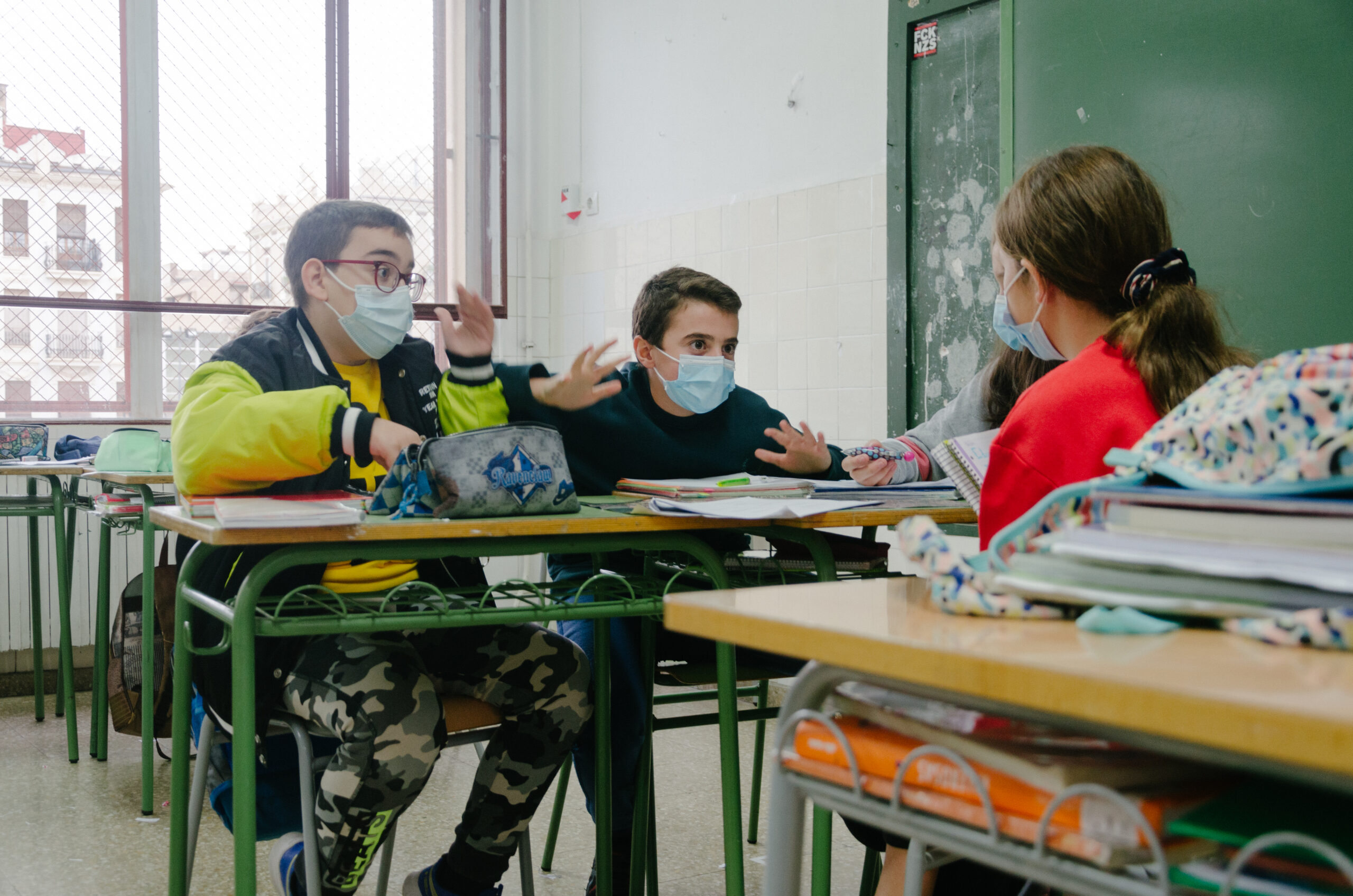
STUDENTS using the kit during the pilot program
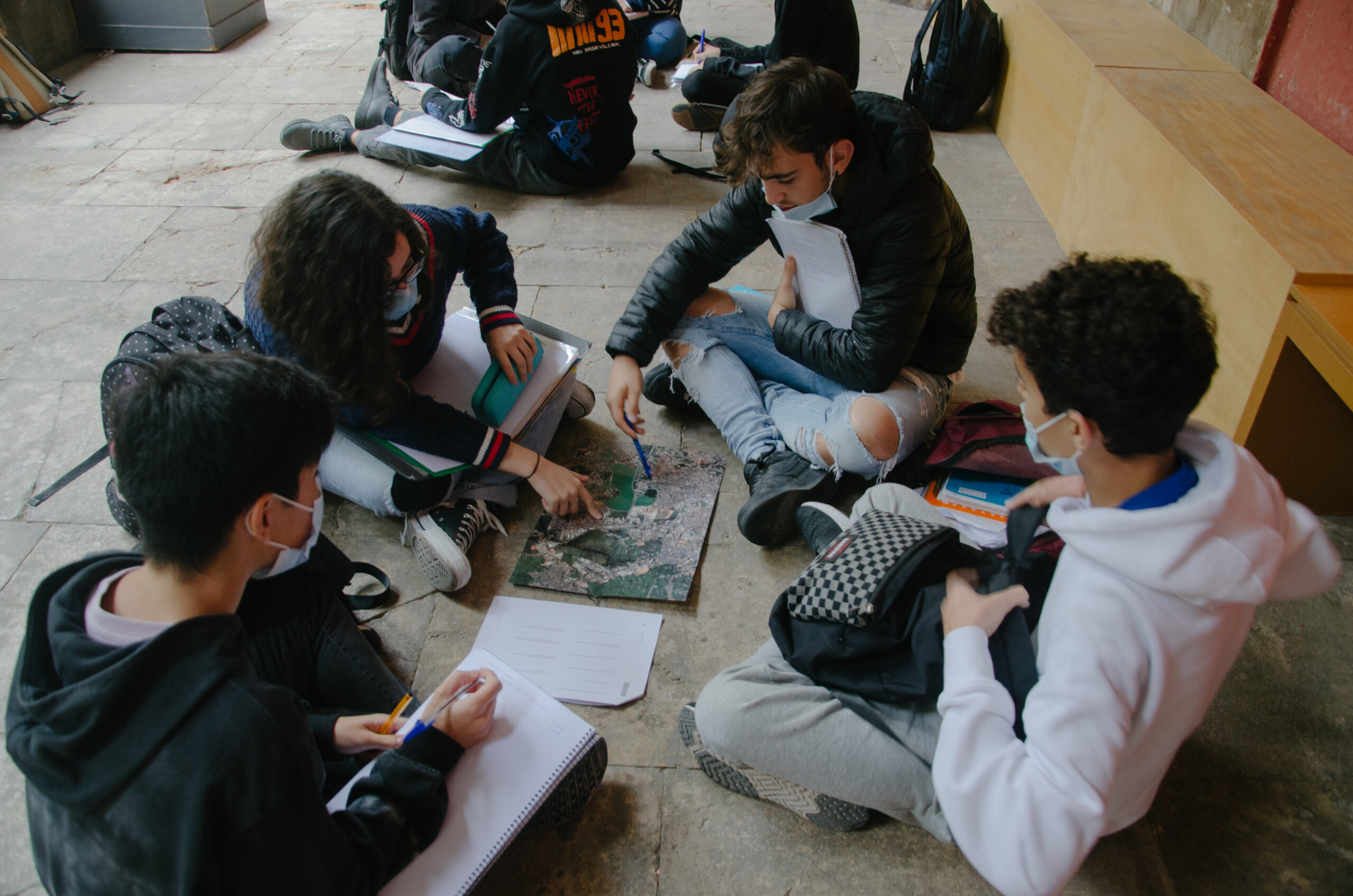
STUDENTS using “Case Studies” models
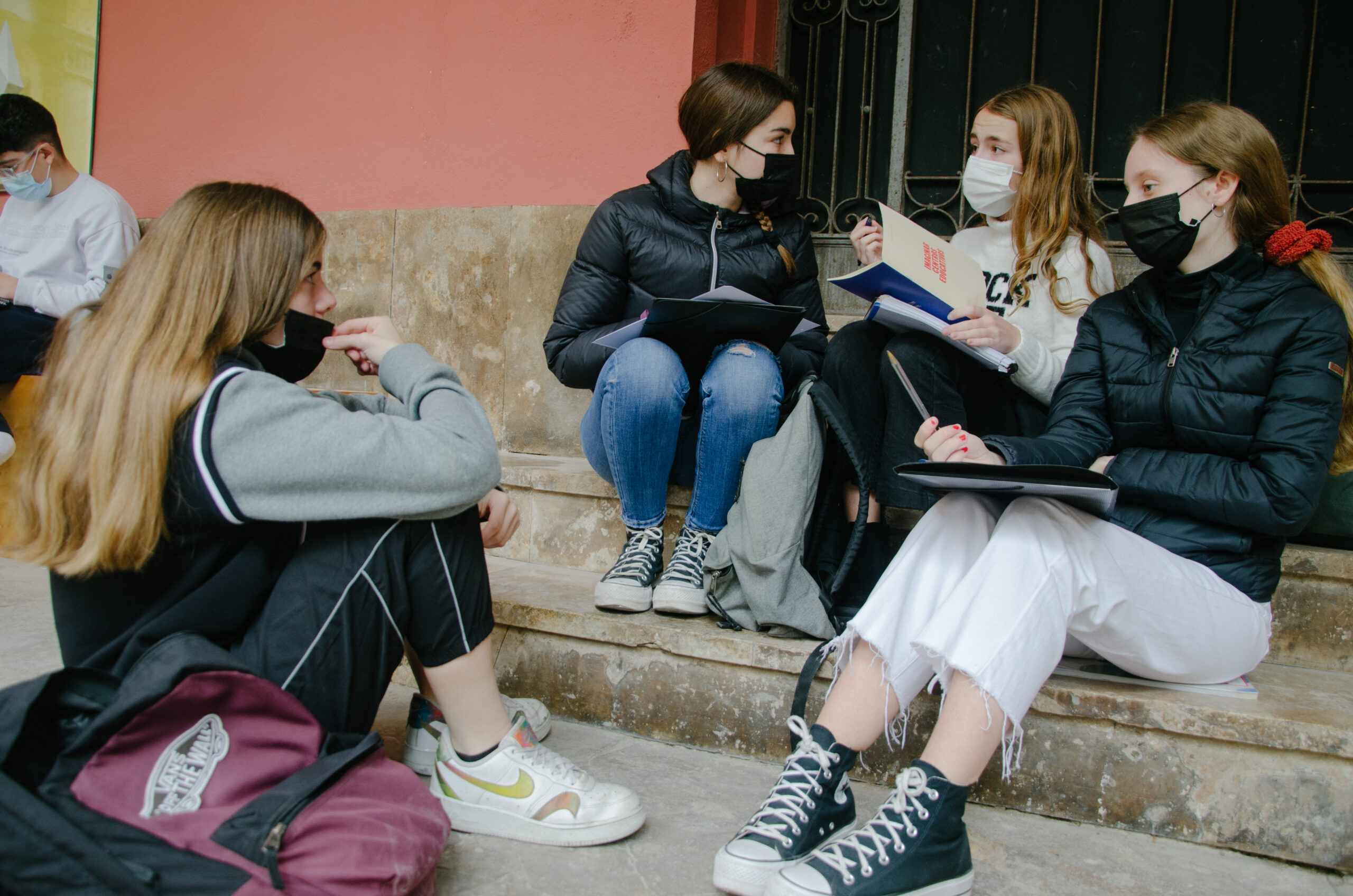
Group of children engaging in kit activities
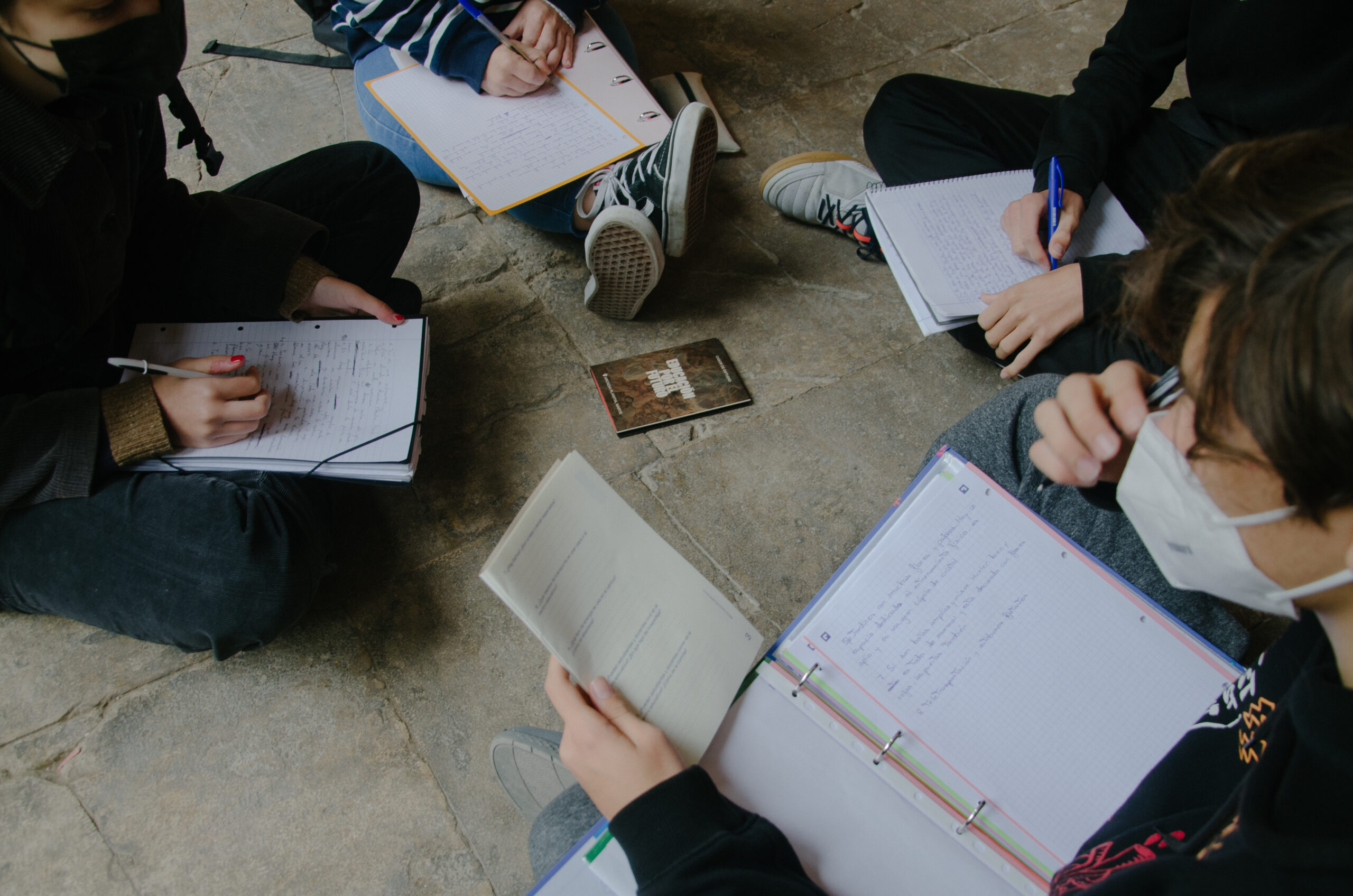
Materials of the kit being used during the pilot program
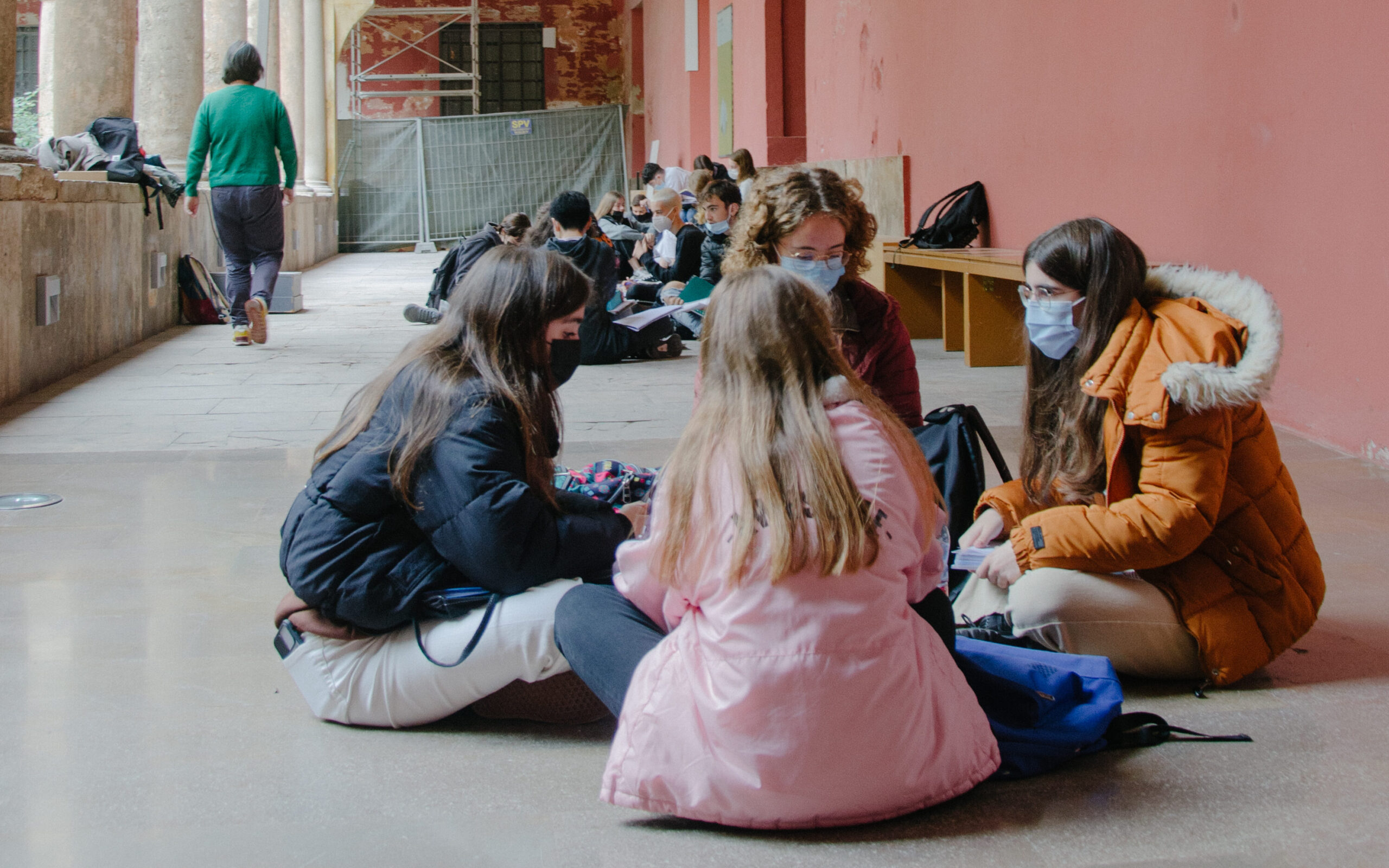
Children engaging in kit activities in groups
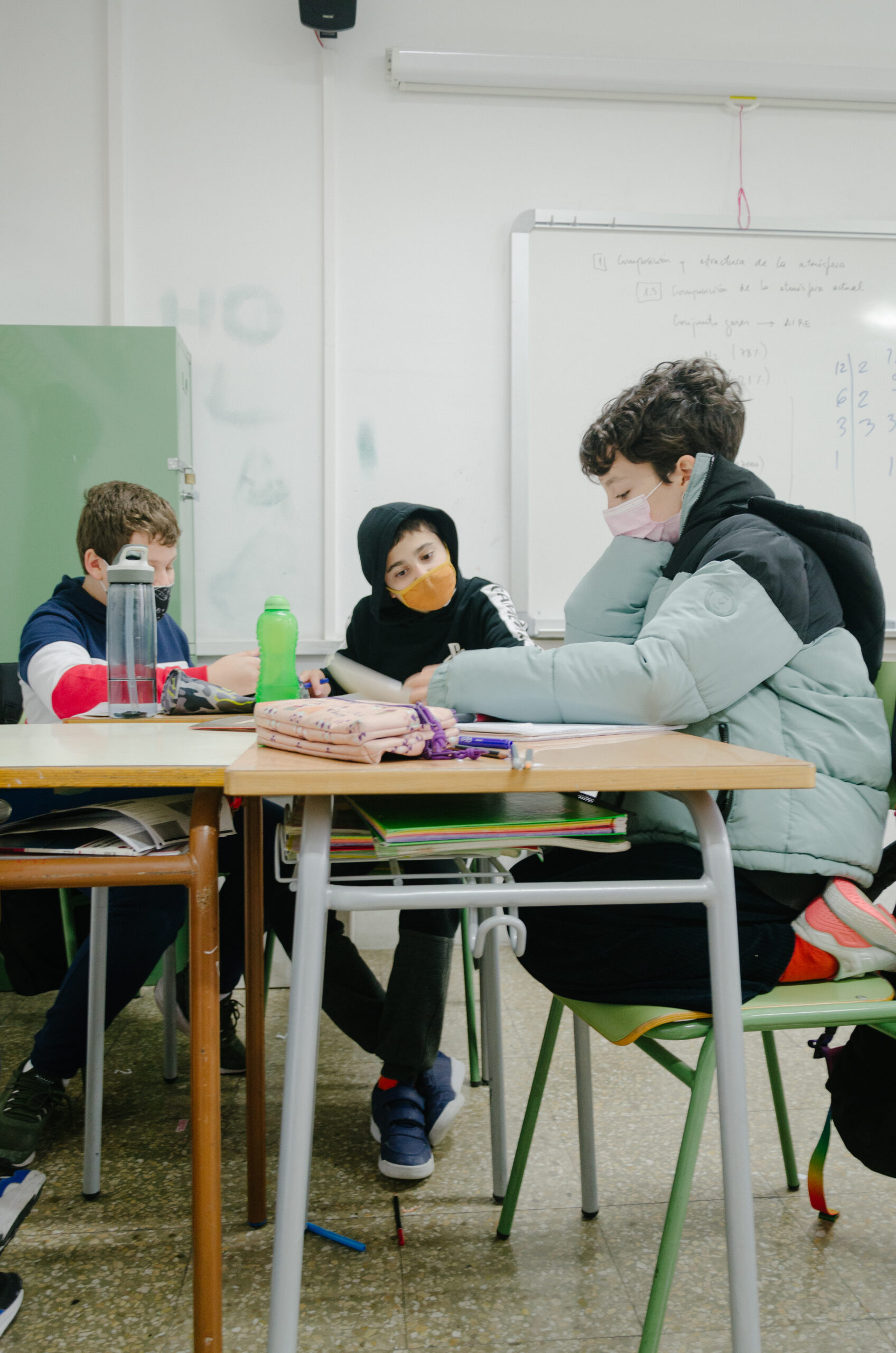
Group of children using the kit materials
5. Documentation
After concluding the pilot program, we arranged a gathering for teachers and students to exchange their experiences. During this meeting, we collected feedback, which we organized using an affinity map exercise that involved students from the pilot program. Using this invaluable input, we refined the materials in the kit, enhancing their quality.
Then, we made these improved resources available to the public through the Planea network website. This step significantly broadened their reach, accessibility, and impact, extending beyond the initial scope of the project.
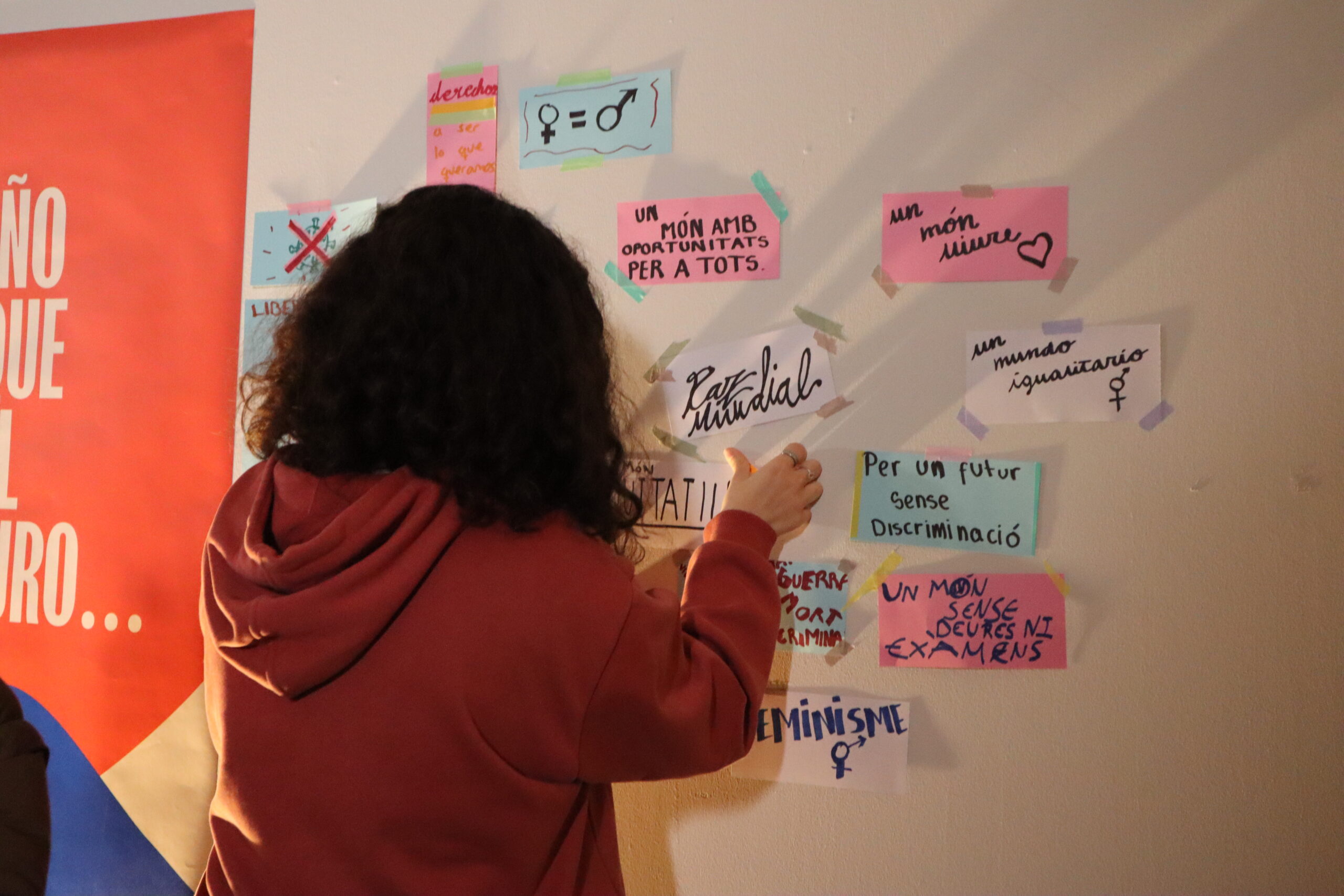
Students doing affinity map exercise to collect feedback

students exchangING experiences
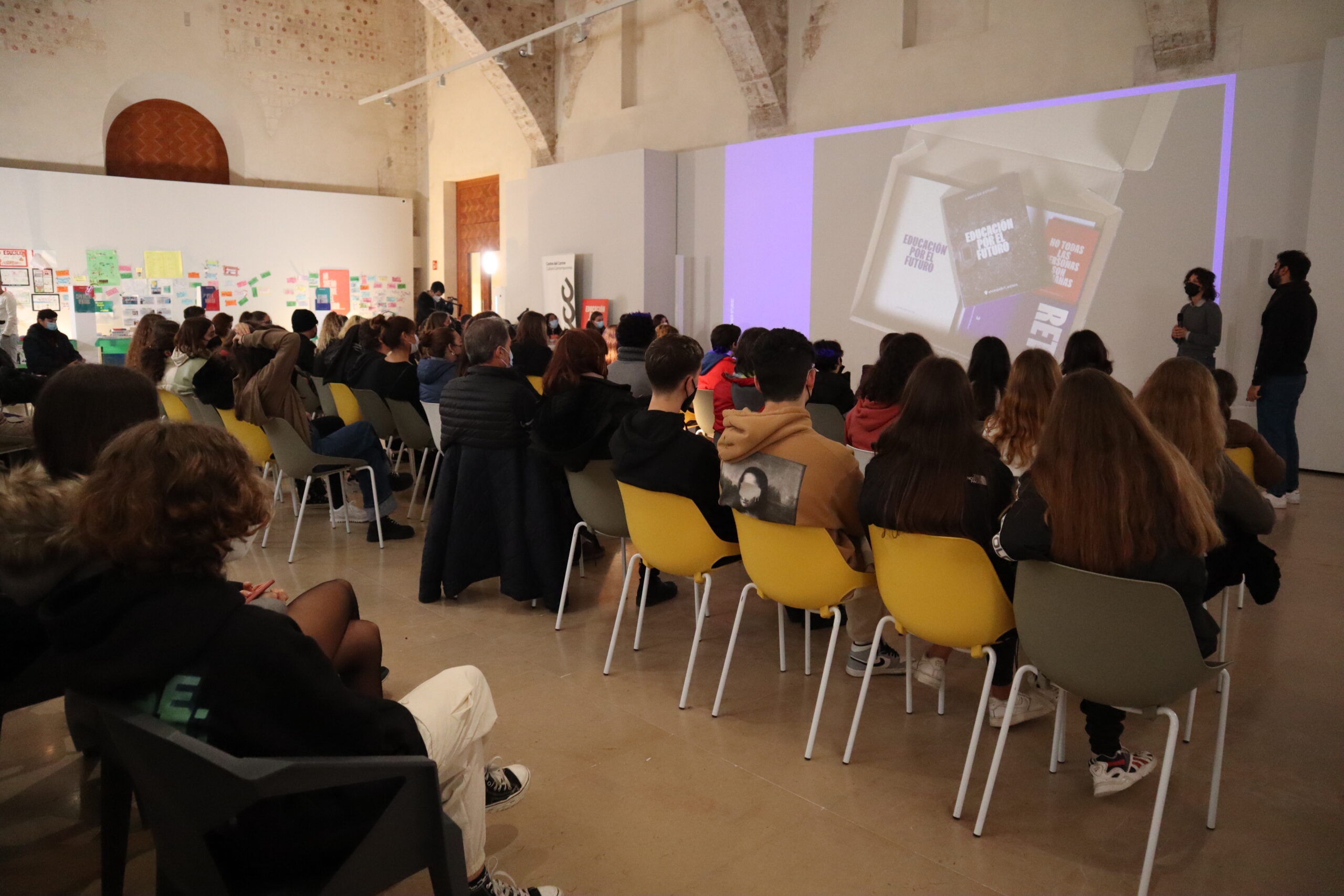
Gathering for teachers and students to exchange experiences
OUTCOMES
• At least ten of the participating schools engaged within their local communities, leading to significant shifts in both their school environments and the broader surroundings. The spectrum of these shifts was broad, spanning the establishment of school gardens and improvements in energy efficiency to the advocacy for increased bicycle usage. Additionally, the project involved the integration of specialized environmental education courses, the coordination of events such as book and educational material exchange fairs, the celebration of multicultural festivals, the establishment of self-managed student centers, and the initiation of support offices with a dual emphasis on environmental and emotional education.
• Furthermore, the introduction of the kit prompted the creation of a wealth of context-specific informational materials uniquely tailored to each educational institution and its environmental circumstances. Students showcased their ideas using diverse creative mediums, including posters, photographs, videos, fanzines, models, blueprints, cartoons, infographics, online games, and informational brochures.
• Through the “Education for the Future” project, we learned that adaptable educational tools enable dynamic responses to diverse environmental challenges. Emphasizing versatility in teaching materials not only encouraged varied approaches across schools but also fostered innovative, context-specific solutions tailored to each community’s needs. This flexibility proved pivotal in empowering educators and students to creatively address environmental issues within their unique educational landscapes.
CREDITS
Collaborators: Centre del Carme Cultura Contemporània, Jodie Dinapoli.
Support: Red, Planea, Permea, Generalitat Valenciana, Fundación Daniel y Nina Carasso, Consorcio de Museos de la Comunidad Valenciana.
All images are courtesy of Äther Studio and Red Planea.